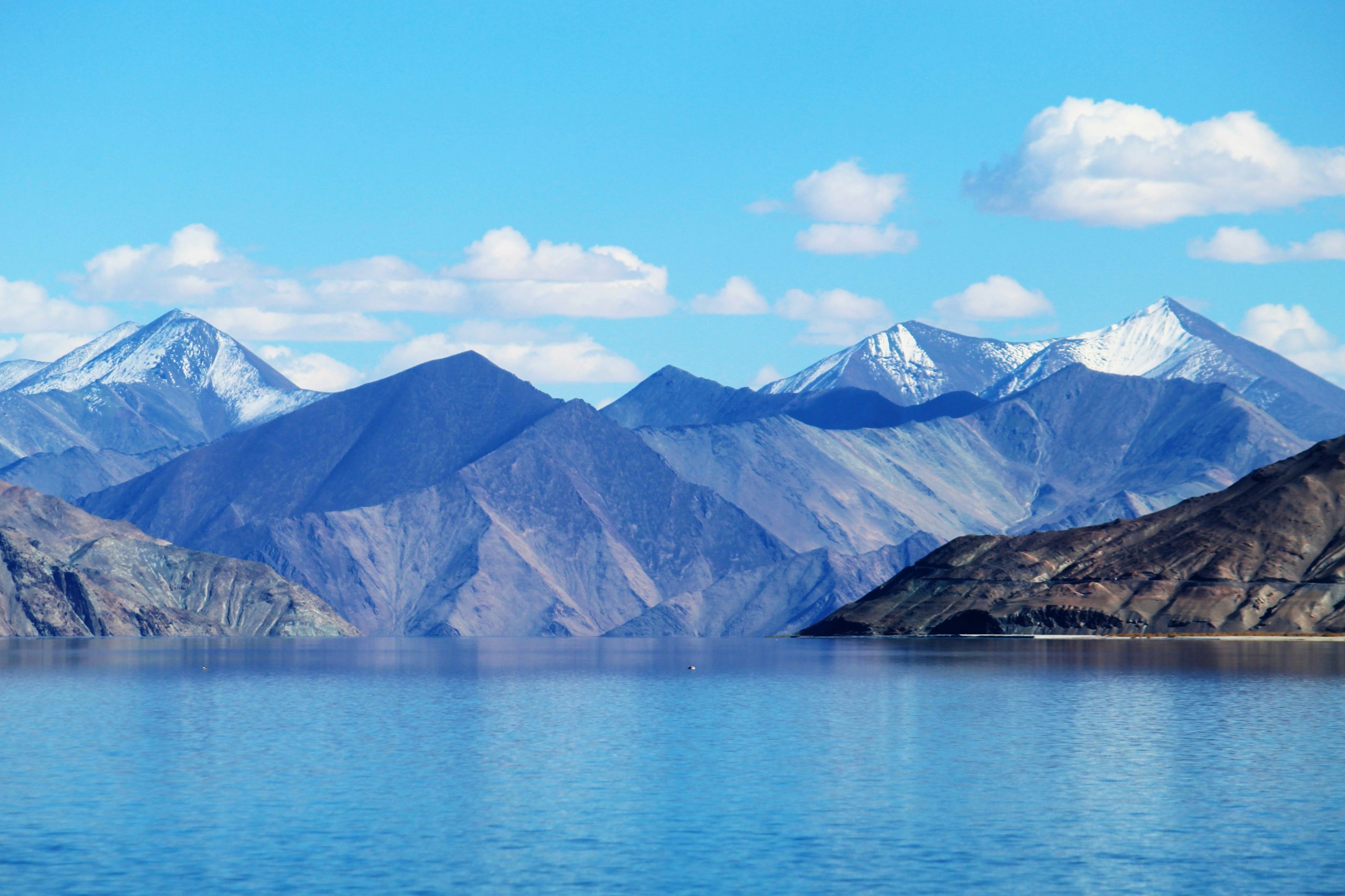Introduction to the Ladakh Itinerary: Gateway to the Himalayas
Planning a Ladakh itinerary opens the door to an unforgettable high-altitude adventure. Nestled between the Karakoram and Zanskar ranges, Ladakh offers travelers an inspiring mix of stark beauty, ancient culture, and Himalayan thrills. For those seeking a well-balanced Ladakh travel itinerary, this guide delivers the ultimate seven-day plan packed with scenic routes, serene monasteries, and awe-inspiring landscapes.
Before diving into daily activities, it’s essential to understand Ladakh’s terrain and climate. The region lies over 3,000 meters above sea level. Therefore, proper acclimatization plays a key role in the success of every Ladakh trip itinerary. Additionally, travel to Leh Ladakh brings encounters with rich Tibetan Buddhist heritage and nomadic traditions, making the experience deeply cultural as well as adventurous.
Why is a well-structured itinerary for Ladakh so important? Weather conditions, altitude variations, and permit requirements all affect accessibility. A detailed plan helps travelers enjoy every day while minimizing health risks and delays.
Key Highlights of This 7-Day Plan:
- Covers Nubra Valley, Pangong Tso, Leh, and more.
- Blends cultural exploration with natural wonders.
- Designed to avoid altitude sickness and fatigue.
- Features optimal travel routes and timing.
This Ladakh itinerary not only ensures a smooth journey but also elevates the overall experience by combining comfort, adventure, and spiritual exploration.
Day 1 of the Ladakh Itinerary: Arrival in Leh and Local Exploration
Begin the Ladakh Travel Itinerary with Acclimatization and Culture
Every successful Ladakh itinerary starts with proper arrival planning and rest. Most travelers first land in Delhi or Mumbai, India’s major international gateways. From there, a direct flight to Leh Kushok Bakula Rimpochee Airport (IXL) is the best way to enter Ladakh. Flights from Delhi to Leh take about 1.5 hours and offer stunning aerial views of the Himalayas.
Because of Leh’s high elevation (around 3,500 meters), acclimatization is critical on the first day. Altitude sickness can affect even seasoned travelers. To reduce the risk, avoid intense activity, drink plenty of water, and rest for a few hours after landing. Light walking is recommended by evening.
Suggested Light Activities for Day 1:
- Visit Shanti Stupa at sunset for panoramic views of Leh and the Stok range.
- Explore Leh Market, filled with local handicrafts and warm Tibetan food.
- Enjoy a traditional dinner with thukpa, momos, and butter tea.
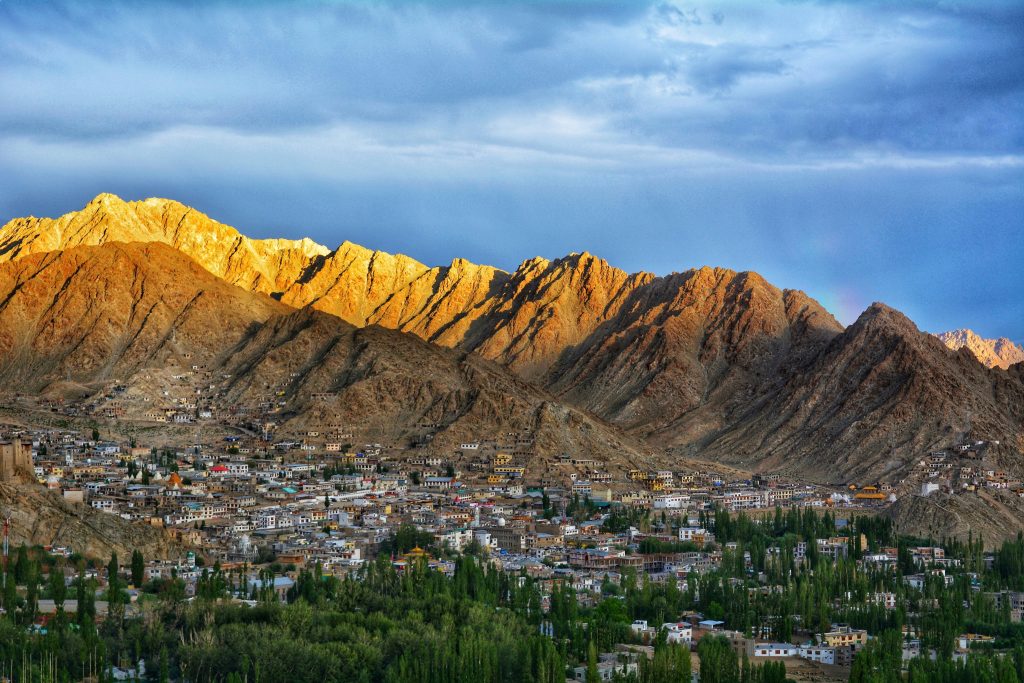
Key Notes:
| Travel Point | Details |
| Recommended Arrival City | Delhi or Mumbai |
| Domestic Flight | Delhi to Leh (1.5 hrs, early morning) |
| Acclimatization Time | Minimum 24 hours |
| Activity Level | Very Light |
Starting this Ladakh trip itinerary with gentle activity sets the stage for a rewarding and healthy high-altitude journey.
Day 2 of the Ladakh Itinerary: Monastery Circuit in Leh Region
Dive into Spiritual Culture in the Ladakh Travel Itinerary
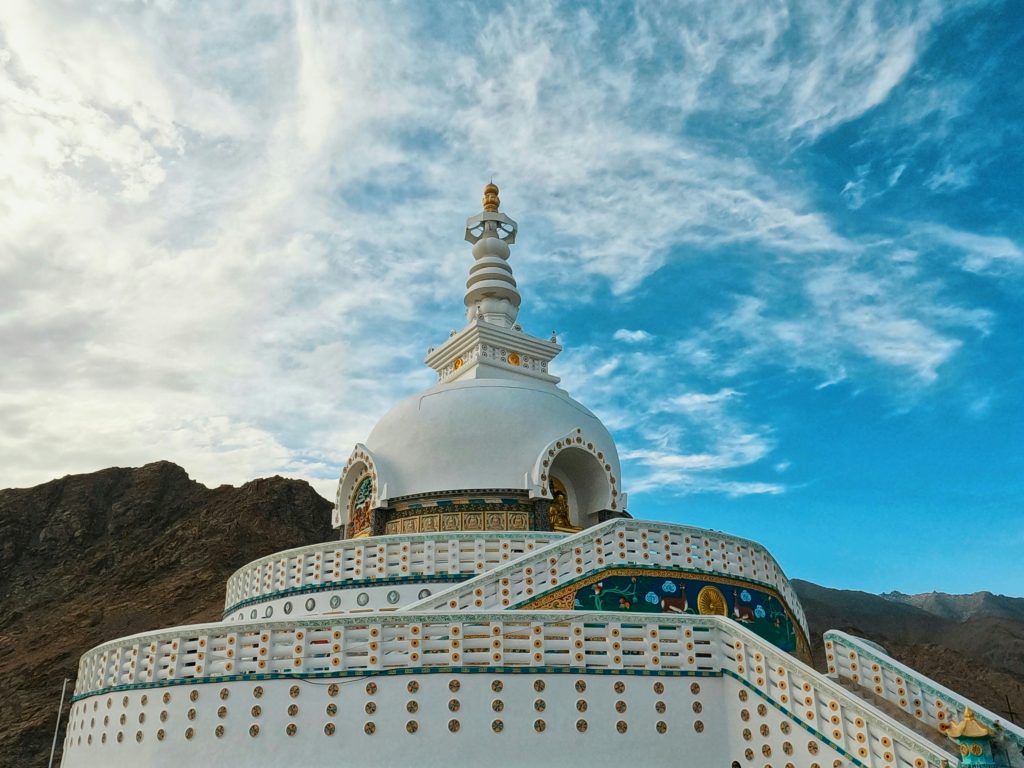
After a restful Day 1, the body is better adjusted to the altitude. This allows for more movement and cultural discovery. Day 2 of the Ladakh itinerary is perfect for exploring the region’s spiritual heritage through its most iconic monasteries.
Begin the morning with a drive to Hemis Monastery, located about 45 km from Leh. Known as Ladakh’s largest and richest monastery, Hemis offers stunning architecture and vibrant Buddhist iconography. Monks chant prayers inside ancient temples, while colorful prayer flags flutter in the wind.
Next, visit Thiksey Monastery, a 12-story structure perched on a hilltop. Its resemblance to Tibet’s Potala Palace makes it one of the most photographed places in Ladakh. Inside, the 15-meter Maitreya Buddha statue draws immediate attention and respect.
Finally, explore Shey Palace and Monastery, once the royal seat of Ladakh’s kings. The golden Buddha statue and panoramic views from Shey offer a perfect closure to the day’s journey.
Monasteries to Include in the Ladakh Trip Itinerary:
| Monastery | Distance from Leh | Highlight Feature |
| Hemis | 45 km | Annual festival, oldest murals |
| Thiksey | 19 km | Giant Buddha, hilltop architecture |
| Shey Palace | 15 km | Royal legacy, massive seated Buddha |
This spiritual loop enhances the Ladakh travel itinerary by adding depth, peace, and architectural wonder.
Day 3 of the Ladakh Itinerary: Leh to Nubra Valley via Khardung La
Experience the High Pass Adventure in the Ladakh Trip Itinerary
Day 3 introduces the first major overland adventure in the Ladakh itinerary. The journey from Leh to Nubra Valley crosses Khardung La Pass, one of the highest motorable roads globally at 5,359 meters. Due to the elevation, the trip is both thrilling and visually breathtaking.
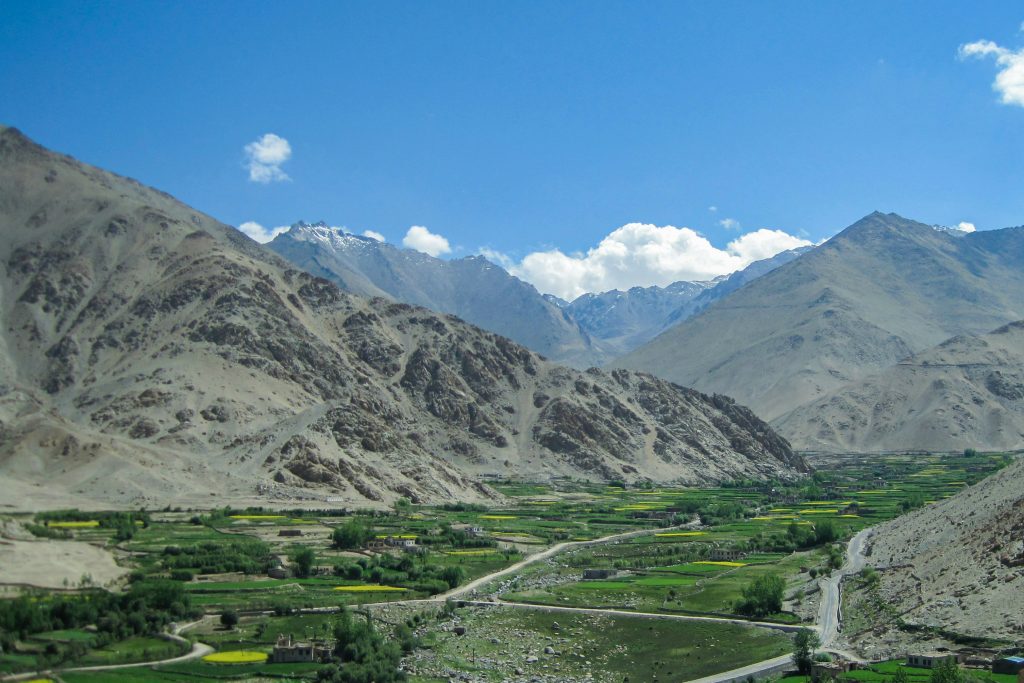
Start early to avoid traffic and sudden weather shifts. The road climbs steeply, offering stunning views of Leh town shrinking below. Prayer flags line the pass summit, making it an ideal photo stop. After crossing Khardung La, the terrain gradually shifts, barren ridges give way to fertile stretches and villages along the Shyok River.
By afternoon, reach Diskit, the largest town in Nubra Valley. Visit Diskit Monastery, home to a towering statue of Maitreya Buddha. Later, head to Hunder Sand Dunes, where double-humped Bactrian camels roam. The desert, framed by snowy peaks, feels surreal and unmatched.
Key Stops on the Nubra Valley Route:
| Destination | Activity | Importance |
| Khardung La | Photo stop, tea break | World’s highest motorable road |
| Diskit Monastery | Monastic tour, hilltop views | Cultural and spiritual insight |
| Hunder Sand Dunes | Camel ride, sunset photography | Desert landscape in Himalayan setting |
This unforgettable journey marks a turning point in the Ladakh trip itinerary, introducing desert beauty within a mountainous realm.
Day 4 of the Ladakh Itinerary: Explore Panamik and Turtuk in Nubra Valley
Add Depth to the Ladakh Trip Itinerary with Culture and Wellness
On Day 4, expand the Ladakh itinerary beyond the common path. Nubra Valley holds much more than sand dunes and monasteries. Travel north toward Panamik Hot Springs, located near the Siachen Glacier zone. These sulfur-rich waters are known for their therapeutic benefits. A short soak refreshes the body, especially after high-altitude driving.
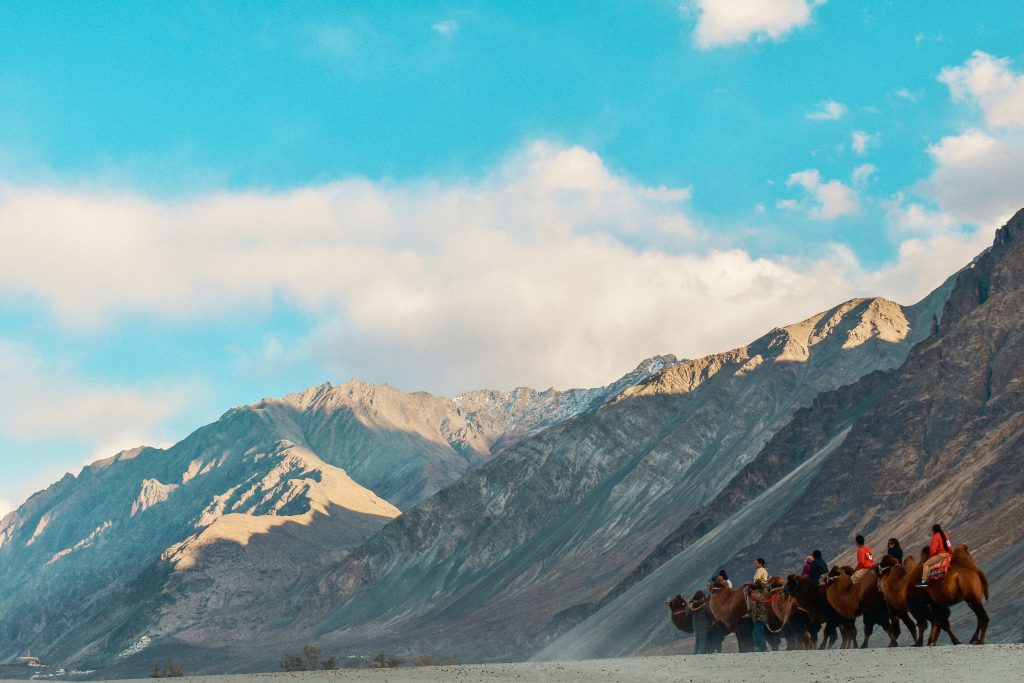
From Panamik, continue toward Turtuk, one of the last Indian villages before the Pakistan border. This region was part of Pakistan until 1971 and offers a unique blend of Ladakhi and Balti cultures. Walk through apricot orchards and stone alleys, observing mud-brick homes and wooden balconies. Unlike other Ladakhi villages, Turtuk feels greener and warmer due to its lower elevation.
Meeting the locals here often turns into a highlight. Their warm hospitality, traditional dress, and handmade apricot products add richness to the Ladakh trip itinerary. For history lovers, a small museum displays relics from Turtuk’s past under Pakistani control.
Places to Include on Day 4:
| Location | Activity | Distance from Hunder |
| Panamik | Soak in hot springs | 40 km |
| Turtuk | Cultural walk, village tour | 85 km |
Return to Hunder by evening for another peaceful night near the Shyok River. Day 4 adds cultural depth and natural therapy to the overall Ladakh travel itinerary.
Day 5 of the Ladakh Itinerary: Nubra to Pangong Tso via Shyok Route
Add Scenic Adventure to the Itinerary for Ladakh with a Lake-Side Escape
Day 5 presents one of the most picturesque drives in the Ladakh itinerary. The route from Nubra Valley to Pangong Tso via Shyok River Valley is shorter than the traditional Leh route and packed with high-altitude beauty. The road runs alongside the Shyok River, crossing dry riverbeds, narrow cliff passes, and occasional grazing grounds.
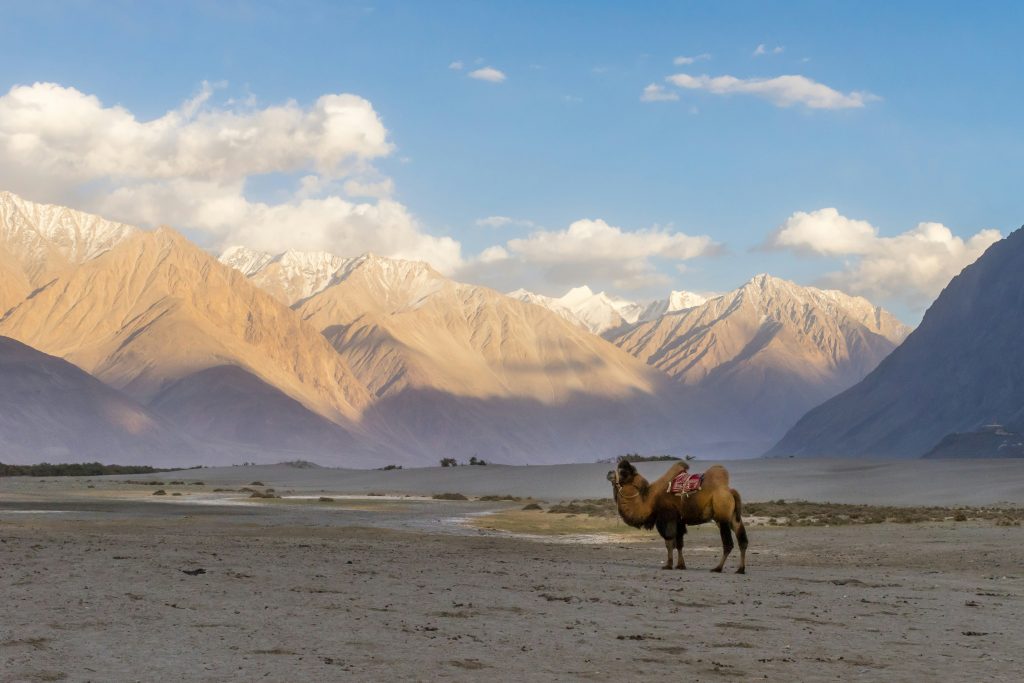
Start early to avoid roadblocks due to landslides or flash floods. Weather can change rapidly in this region. As the journey progresses, landscapes shift from brown to golden and eventually to the famous deep blues of Pangong Tso, the crown jewel of every Ladakh trip itinerary.
The lake stretches over 130 km, with 60% lying in Tibet. Watch colors change from teal to deep blue, depending on the light and time of day. Pangong sits at 4,225 meters above sea level, so movement should stay light. Photography, lakeside walks, and tea at local camps offer a perfect wind-down.
Shyok Route Travel Tips:
- Road Type: Mostly rough with river crossings
- Total Distance: Approx. 180 km
- Travel Time: 6–7 hours
- Key Stops: Durbuk (for food), Tangtse (permit check)
Spending the night in a lakeside camp enhances the Ladakh travel itinerary with silence, stars, and unforgettable natural beauty.
Day 6 of the Ladakh Itinerary: Pangong Tso to Leh via Chang La Pass
Reconnect with the Highlands on the Ladakh Travel Itinerary’s Return Route
Waking up by Pangong Tso is a quiet, humbling experience. The still waters reflect morning skies as the first light warms distant peaks. After breakfast, the return leg of the Ladakh itinerary begins. Today’s route leads back to Leh via Chang La Pass, one of the highest mountain passes in the world at 5,360 meters.
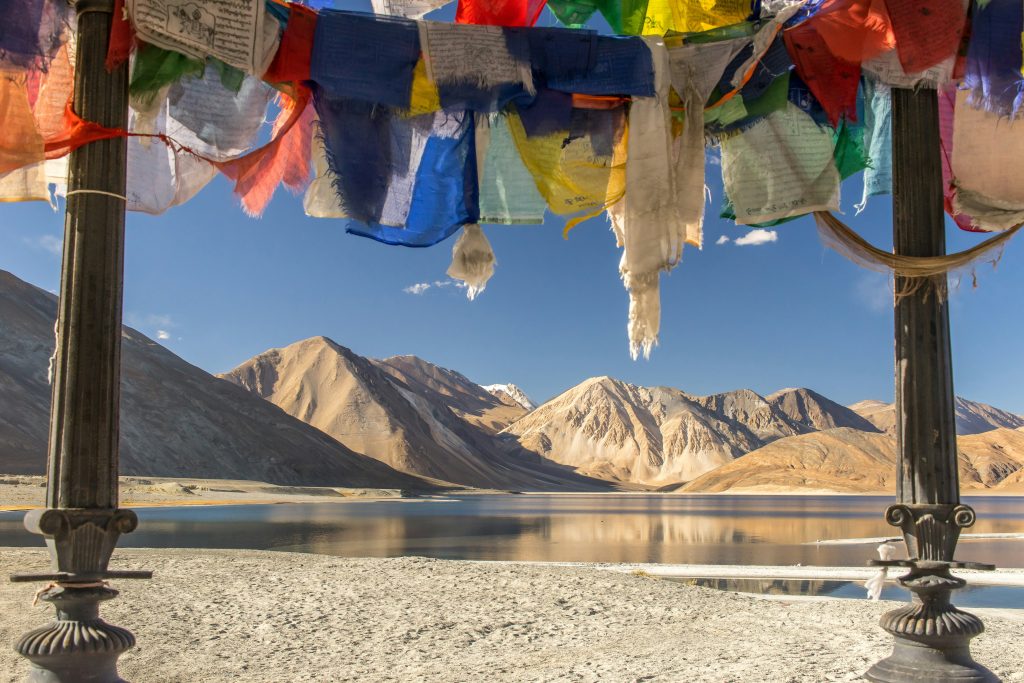
The road from Pangong to Chang La climbs steadily. Along the way, small settlements like Tangtse and Durbuk offer tea stops and permit checks. Reaching the top of Chang La rewards travelers with ice walls, prayer flags, and a small temple. Keep breaks short, temperatures remain low even in summer.
As the descent begins, the landscape transforms again. Snow gives way to rocky hills, and soon, green patches signal the outskirts of Leh. By late afternoon, return to the town, tired yet fulfilled.
Return Day Essentials:
| Route Segment | Key Info |
| Pangong to Chang La | Approx. 75 km, high-altitude road |
| Chang La to Leh | Approx. 95 km, winding descent |
| Total Travel Time | 6–7 hours |
This transition day in the Ladakh trip itinerary brings the journey full circle, combining altitude extremes with a well-deserved return to comfort.
Day 7 of the Ladakh Itinerary: Indus Valley Sites and Departure via Leh to Delhi
Conclude the Itinerary for Ladakh with Culture, Nature, and Exit Planning
Day 7 wraps up the Ladakh travel itinerary with a blend of history, natural wonder, and ease of travel. Begin with an early drive west of Leh to explore the iconic Indus Valley. The first stop is Sangam, where the Indus and Zanskar Rivers meet in a dramatic, color-contrasting confluence.
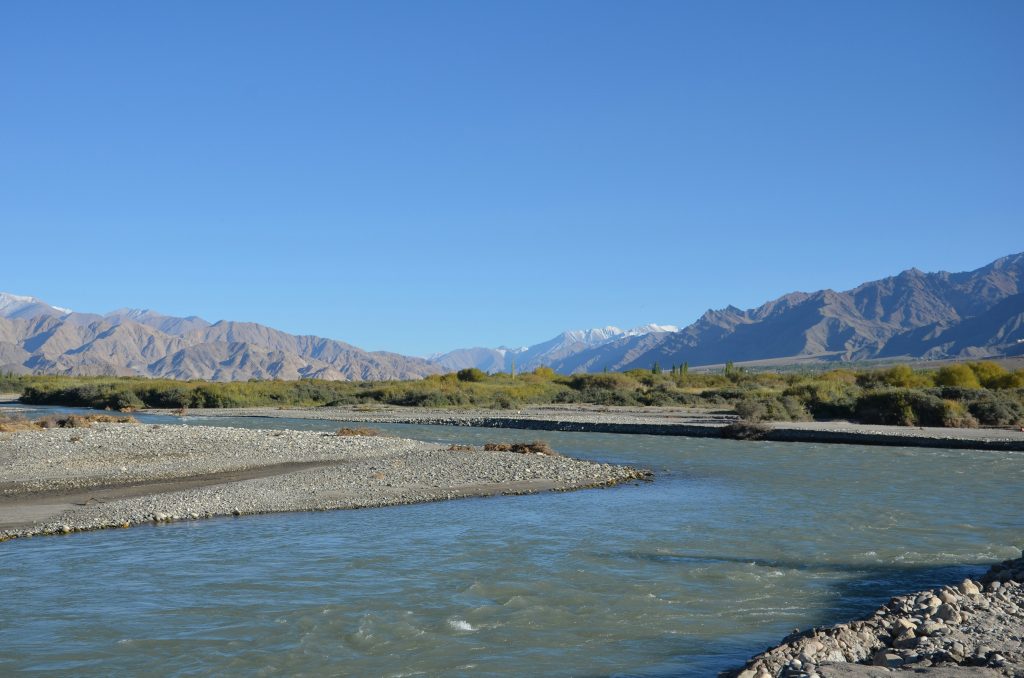
Continue toward Magnetic Hill, a famous stretch of road where vehicles appear to defy gravity. Although the effect is optical, the experience adds intrigue. Next, visit Alchi Monastery, one of the oldest in Ladakh. Its wood-carved statues and Kashmiri-influenced murals stand in contrast to other high-perched monasteries in the region.
After returning to Leh by late afternoon, prepare for departure. The only airport in the region, Leh Kushok Bakula Rimpochee Airport (IXL), handles daily flights to Delhi, the best city for exiting India. Delhi’s Indira Gandhi International Airport (DEL) offers extensive international connections.
Departure Details:
| Departure Point | Option | Notes |
| Leh Airport (IXL) | Fly to Delhi | Daily early flights recommended |
| Delhi International | Exit India via major airlines | Check visa and customs requirements |
This day completes the Ladakh itinerary with cultural depth and logistical clarity, ensuring travelers end their journey with a seamless return home.
Bonus: Explore the Ladakh Itinerary by Motorbike
Add Thrill to the Ladakh Trip Itinerary on Two Wheels
Adding a motorbike experience to the Ladakh itinerary amplifies freedom, thrill, and connection to the landscape. Many travelers rent Royal Enfield Himalayans or Classic 500s in Leh to explore popular circuits. The sensation of navigating narrow roads, high passes, and desert plateaus by bike turns the journey into a personal challenge.
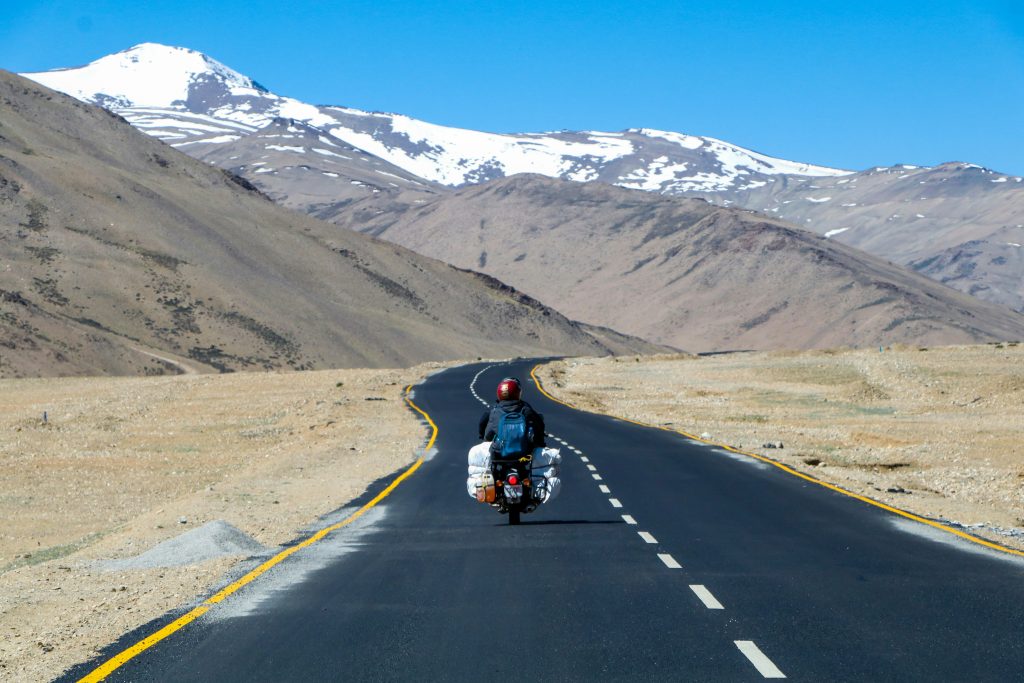
A classic loop covers Leh → Khardung La → Nubra → Pangong → Chang La → Leh, matching the standard Ladakh travel itinerary but from the saddle of a bike. Riders experience the terrain more directly, feeling the wind at 5,000 meters and witnessing mountain ranges without glass in between.
Rental shops in Leh provide helmets, gloves, and basic repair kits. However, careful planning is key. Fuel stations are sparse outside Leh and Diskit. Weather can change quickly. Riders must stay alert and ready for gravel, water crossings, and sharp turns.
Recommended Biking Essentials:
- Sturdy riding jacket and layered clothing
- Waterproof gloves and boots
- Bungee cords for luggage
- Basic tools and puncture repair kit
- Fuel cans (especially for Pangong to Leh stretch)
Motorbiking brings raw authenticity to the Ladakh trip itinerary. It’s not for every traveler,but for those who seek it, the rewards are profound.
Travel Logistics and Restrictions in the Ladakh Itinerary
To make the most of any Ladakh itinerary, travelers must plan around transportation logistics, permit regulations, and local restrictions. This region, while spectacular, operates under specific rules due to its strategic location and environmental sensitivity.
Primary Modes of Transport:
| Transport Type | Route | Best For |
| Flight | Delhi to Leh (IXL) | Fastest, avoids long land travel |
| Private Taxi | Entire 7-day Ladakh route | Comfort, flexibility, convenience |
| Shared Cab | Leh to Nubra, Pangong | Budget-friendly option |
| Motorbike Rental | Leh-based loops | Adventure-focused travelers |
Leh functions as the central transport hub. All major journeys,whether toward Nubra, Pangong, or Lamayuru, begin here. Roads can be unpredictable. Weather conditions often delay routes over passes like Khardung La and Chang La.
Permit Requirements for the Itinerary for Ladakh:
- Inner Line Permits (ILP) are required for Indian citizens to access Nubra Valley, Pangong Lake, and Tso Moriri.
- Foreign nationals must obtain Protected Area Permits (PAP).
- All permits are issued via the Leh District Magistrate’s office or online platforms.
- Always carry multiple photocopies for checkpoints.
Key Warnings:
- Avoid visiting during winter (Oct–May) due to snow-blocked roads.
- Carry cash; ATMs are unreliable outside Leh.
- Fuel stations are limited, filling tanks in Leh and Diskit.
Following these logistics ensures the Ladakh trip itinerary remains smooth, secure, and unforgettable.
Final Travel Tips to Complete the Ladakh Itinerary Smoothly
Before wrapping up the journey, these travel tips will ensure a smoother experience across every part of the Ladakh itinerary. While the landscapes are majestic, they also demand preparation and awareness.
Packing Essentials for Travel to Leh Ladakh:
- Clothing Layers: Include thermals, mid-layers, a windproof jacket, and gloves. Temperatures vary drastically, even in summer.
- Footwear: Use waterproof trekking shoes with ankle support. Uneven terrain is common.
- Health Kit: Carry Diamox, ORS, band-aids, painkillers, and altitude sickness medication.
- Sun Protection: Sunscreen (SPF 50+), lip balm with SPF, and UV-protective sunglasses are vital.
- Water Gear: Bring a reusable bottle and purification tablets or a filter.
High-Altitude Behavior:
- Ascend gradually. Avoid heavy exertion during the first 24 hours.
- Stay hydrated. Drink 3 – 4 liters of water daily.
- Eat light and warm meals; avoid alcohol and smoking early in the trip.
Local Etiquette and Cultural Tips:
- Always ask before photographing monks or villagers.
- Remove shoes before entering monasteries.
- Use minimal plastic and dispose of waste responsibly.
- Dress modestly in rural areas and religious sites.
By following these practical steps, the Ladakh travel itinerary becomes not just manageable, but deeply rewarding. Each tip enhances comfort, respects local culture, and supports sustainable travel.
Conclusion: Why This 7-Day Ladakh Itinerary Works for Every Explorer
The journey through Ladakh is more than just a trip, it’s a transformation. This carefully structured Ladakh itinerary balances adventure with altitude adjustment, cultural immersion with natural wonder, and planning with spontaneity. Over seven days, travelers witness dramatic shifts in terrain, from lunar deserts to glacier-fed lakes.
Starting with calm acclimatization in Leh, the route progresses steadily through monasteries, across world-record passes, into camel-dotted deserts, and along lakes reflecting Himalayan skies. Each element of the Ladakh travel itinerary fits together like pieces of a carefully crafted puzzle. More importantly, this plan respects the challenges of high-altitude travel, ensuring both comfort and safety.
Those planning a longer adventure may also explore this Unforgettable India Trip Itinerary: 21 Days of Magic to extend the journey beyond Ladakh. Combining this with the 7-day Ladakh plan offers the best of both regional depth and national discovery.
Final Thought:
Ladakh leaves a permanent imprint etched in silence, shaped by stone, and framed in prayer flags. With proper preparation, this Ladakh trip itinerary becomes more than a list of destinations; it becomes a memory carved into the Himalayas.
What’s Next?
Loved this guide?
- Leave a comment below, what destination excites you most?
- Share this itinerary with a fellow traveler or on social media.
- Ask questions, we’re here to help you build your perfect high-altitude plan.
This post is your starting point. Let the mountains do the rest.

